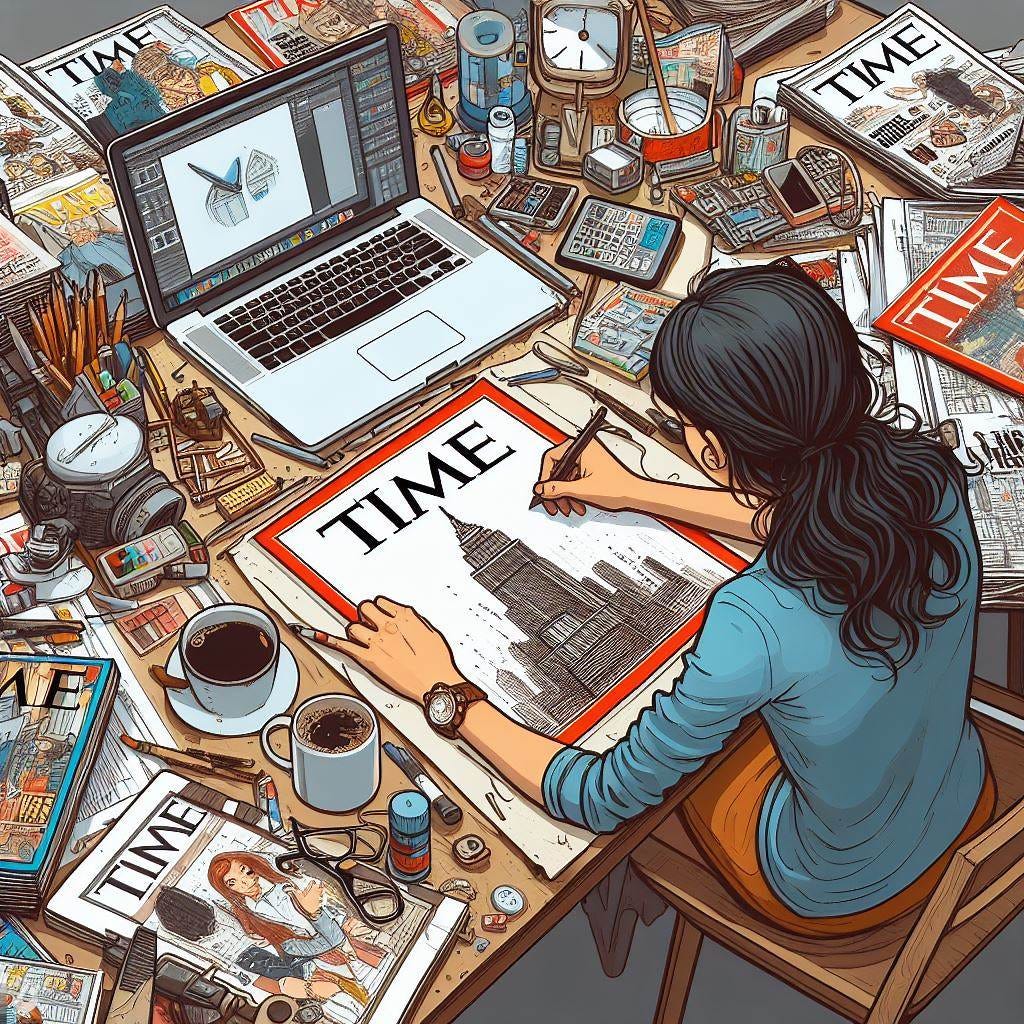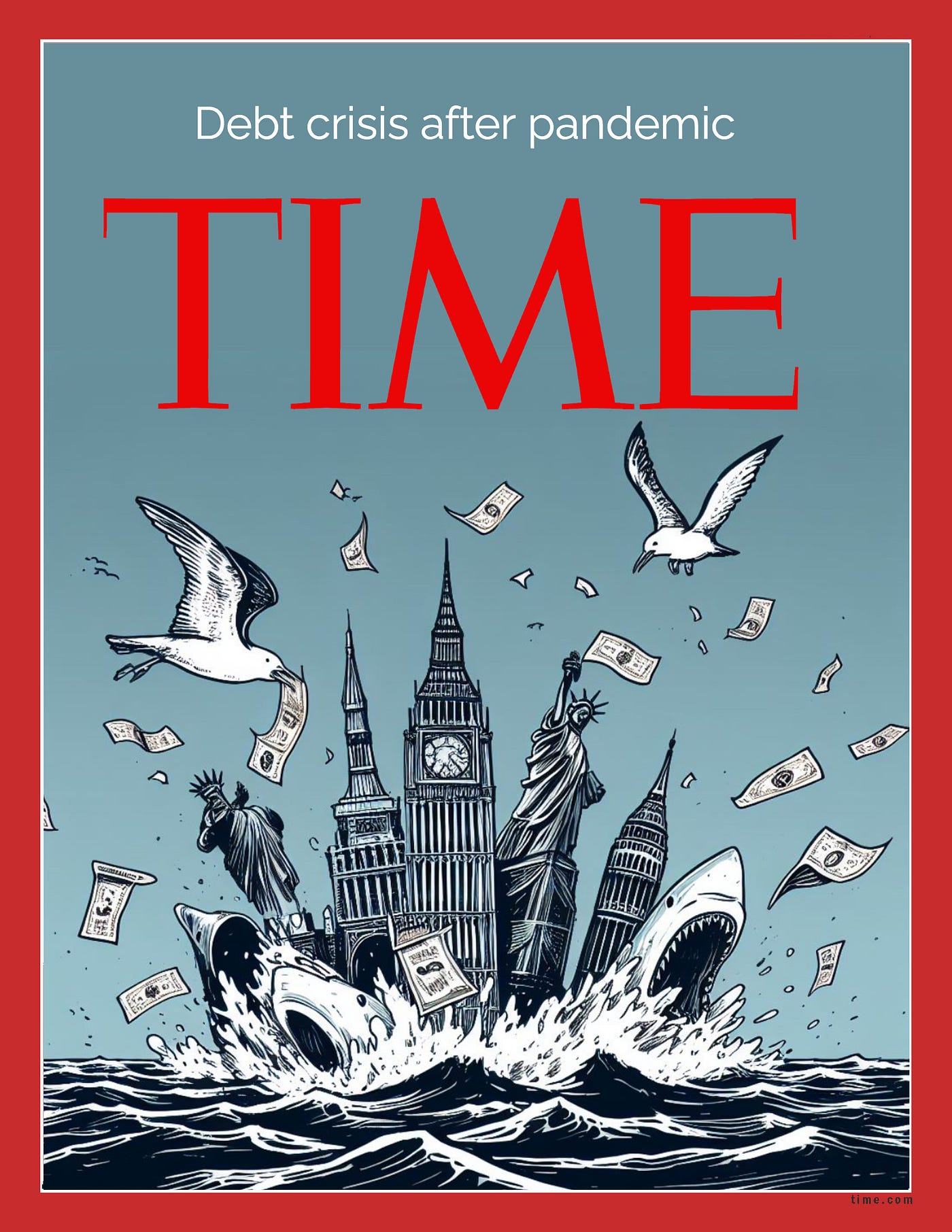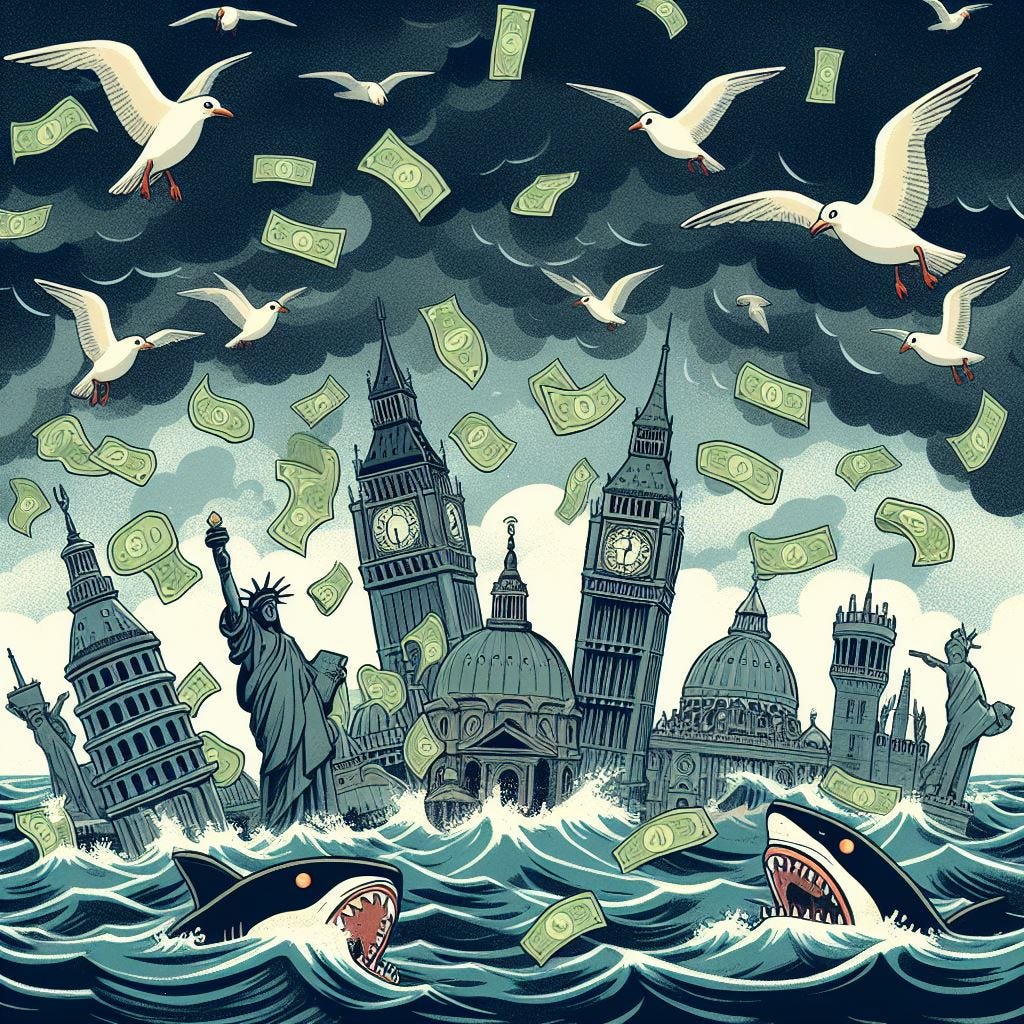I have a special fondness for magazines adorned with illustrations, especially Time Magazine. The unique art covers often leave me in awe. I admire the creativity that springs from the minds of its illustrators. They consistently demonstrate a remarkable ability to respond swiftly to the hottest topics, accurately capturing the essence of reported stories with simple yet meaningful pictures.

Through these illustrations, they effectively use visual impact to express their reporting position, instantly grabbing attention and allowing readers to form quick impressions. Furthermore, the covers showcase artistic beauty, giving the magazine a tasteful appearance. Undoubtedly, this is a testament to the magazine's keen understanding and catering to the preferences of its target readership.
In the current surge of generative content, images generated by AI generator are inundating the entire internet. I am curious about whether Time magazine, which frequently uses illustrations on its covers and within its content, will consider integrating AI-generated images. This decision may depend on whether the application can generate eye-catching illustrations that align with the magazine's themes and can produce efficient artwork within a certain budget (I am unsure about how they balance appreciation for human creativity with efficiency).
Imagine a few prompts input, and with one click, the image in your mind just appears right in front of you.
Now it's got me wondering, do creative illustrators face severe competition from these AI image generators? This raises an interesting question about the extent to which illustrators might be replaced by AI and what significant contributions human input still holds in the creative industry.
To explore this, I've identified some of the hottest topics for 2023 and used Bing to generate illustrations for Time covers, allowing us to analyze the progress and outcomes. I will try refining my prompts (around 10 times) to get the best result for each topic. After comparing human creativity and AI generativity, I hope we can gain a better understanding of our new position in this era of rapid AI advancements.
The New Space race
On a table lies a carefully detailed map adorned with small flags representing powerful countries. At the map's center, a contemporary spaceship model awaits liftoff, capturing the essence of an upcoming space race. Around the table, shadowy figures watch the unfolding cosmic competition; Some hands are engaged in playing casino chips, and others have already been placed on the map; dark atmosphere, comic, simple pencil drawing

My initial intention was to place the national flags of China, Russia, the USA, India, and Japan on the map since they are the main players in the space race this year. However, Bing denied my request, stating that the prompt had been blocked. While experimenting with different words, I identified the ones causing the issue. Eventually, I discovered that removing just one country allowed the prompt to work perfectly fine. Using art generator was like cracking the code in a mystery game. I really have no idea why this specific country is being blocked. If you can guess which country and share your thoughts, I'd appreciate it.
Yeah! I'm relieved to know that my Photoshop skills are still useful here, I can manually add the flags!
Debt crisis after pandemic
Different Iconic landmarks of different countries are sticked together sinking in the tumultuous ocean, as money notes cascade from the stormy sky, eagerly seized by seagulls in flight. In the water, aggressive sharks open their wide mouths to catch the money notes which are flying down, seagulls in the sky are fighting to catch the money notes; dark, atmospheric ambiance; simple comic hand-drawing.

I'm truly captivated by this unintentional relief printmaking style; it brings a simplicity and directness that I adore. The inclusion of Big Ben and the Statue of Liberty is crystal clear, and this is the only image that doesn't show duplicate landmarks. Even though I added a specific line of prompt stating which landmarks I want or 'no repeat landmarks,' it turned out there is no difference.
I also added 'masks in the ocean' and 'mask ocean' because it not only represents the economic aftermath of the pandemic but also looks more extravagant and eye-catching. However, the prompts were ignored.
I also used prompts for different art styles like 'minimalist' and 'few colors,' and finally got a lot of results. I selected the one below from more than 50 images, but they are quite similar. Giving up on the art generator might bring me unexpected surprises. Um, I think I will vote for the one above.

Risks of Generative AI
Using word terms "Bias in AI","Deepfake", "Privacy and Security Concerns", "Job Displacement", "Ethical Concerns" to create a AI figure, minimalist, few colors

After more than ten clicks with the same prompts, I finally obtained one good result of a typographical illustration. Clearly, you can see that the words are spelled incorrectly. The failed outcome provided by Bing has given me a special task here. I estimate that it would take two days of work to organize these words neatly. To make them flow more smoothly or be more creative, it might take a total of four days of human input. Congratulations, illustrators!
Conclusion
After experimenting with Bing, I am contemplating whether AI-generated images meet the requirements of these renowned publishers and the aesthetic preferences of readers. At this stage, I can only use those images as concept art, they still need a lot of fine-tuning.
Artists interpreting a certain theme and deciding on the art style to perfectly convey the meaning still require a certain amount of time and thought. They need to explore different art styles, undergo numerous attempts, and make continuous adjustments during the creative process to refine the design and achieve the best visual impact. Creation is not just a few lines of prompts and a few clicks, and it's certainly not about efficiently obtaining random results. It's also not about the ability to select the best option from a large number of easily obtainable choices.
Human creativity is a valuable asset to be appreciated.
Productivity is not the sole consideration, what truly moves people is the dedicated effort of humans and the passion to express themselves. Just like words, image creation is one of the primary mediums through which humans express themselves. The impact of AI, lacking the essential nature of creativity, on human society's constructive development remains a subject of doubt for me. If you believe productivity is currently the most crucial consideration for humanity, then not only creative image-making but even activities that require human thought, such as writing, reading or painting, would lose their value and significance.
"Creativity is seeing what others see and thinking what no one else ever thought." -- Albert Einstein
All images are generated by Bing.